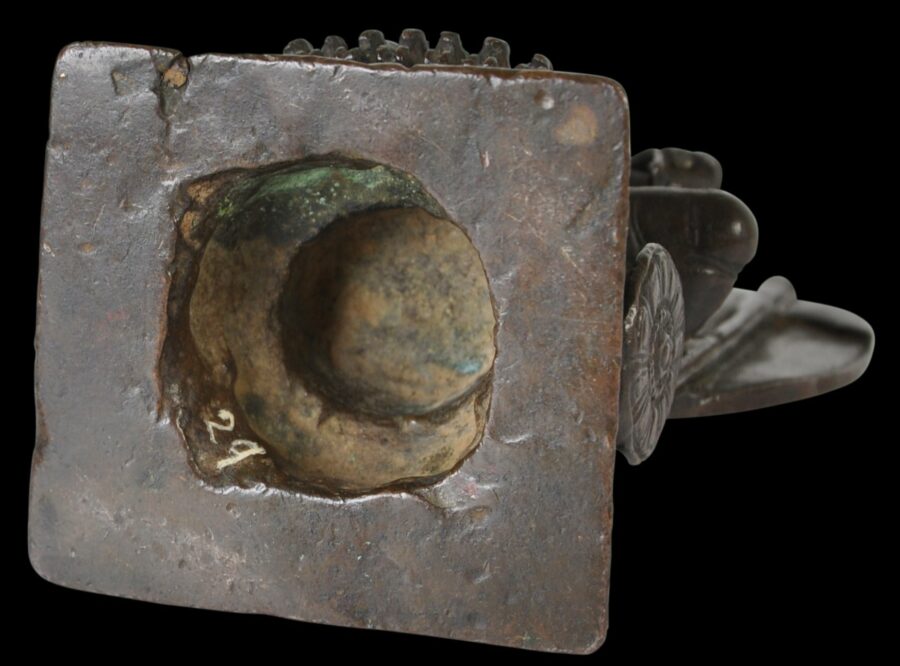This fine, compact, cast bronze depiction of Surya is unusual – depictions of Surya are uncommon in any event.
It shows the sun or solar deity sitting cross-legged on a double lotus pedestal atop a chariot driven by his charioteer Aruna pulled by seven horses, or by one horse with seven heads (Uchchaihshravas). The chariot has only one wheel, to Surya’s left, suggesting the annual cycle of the seasons. On the right is an unusual motif – perhaps a large head or rice thus possibly furthering the associations with sun, seasons and fertility. Aruna has no legs and is the brother of Garuda, whose body protects the world from the scorching sun.
Surya himself is considered the centre of creation, and a source of light, warmth, life and knowledge. He was regarded as the solar deity from very early on – the personification of the sun. Probably, Surya represents a borrowing of an Iranian or Persian sun god. In medieval India (around the 12-13th centuries) it is likely that Surya had his own cult. Surya became seen as related to Vishnu.
The round, attached disk behind Surya is a large sun emblem.
A bronze of related form but with much less detail is illustrated in Dursum (2004, p. 86) and attributed to North-west India.
The image here has a fine, chocolate-brown patina.
References
Dursum, B., et al, Change and Continuity: Folk and Tribal Art of India, Lowe Art Museum, University of Miami, 2004.
Guy, J., Indian Temple Sculpture, V&A Publications, 2007.
Skelton, R. & M. Francis (eds.), Arts of Bengal: The Heritage of Bangladesh and Eastern India, Trustees of the Whitechapel Gallery, 1979.








